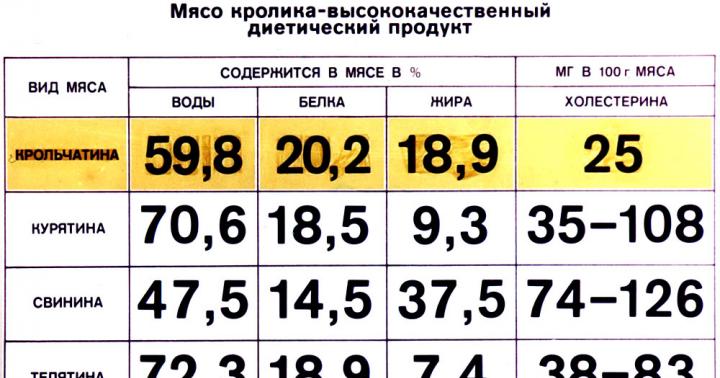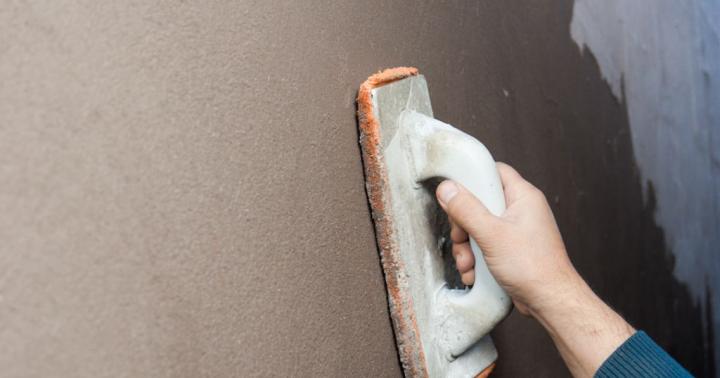Hyundai Getz is a budget subcompact car produced from 2002 to 2011 by the South Korean motor transport company Hyundai Motor Company. This is a fairly inexpensive car with good technical characteristics. According to most motorists, the lightweight, economical and safe Hyundai Getz has proven itself only on the positive side.
Its only drawback is a significantly low ground clearance. According to the technical specifications, its ground clearance is 135 mm, and with crankcase protection, this distance becomes even less (by 20 mm). On numerous forums, people write reviews that such a low ground clearance of the Hyundai Getz makes it difficult to drive on broken asphalt with deep holes and on country roads.
It is especially difficult for the owners of this vehicle in winter, when there is a lot of high ice on the roads and snow. Very often, Hyundai Getz owners resort to increasing the distance between the road surface and the bottom of the car (lifting). The only exception is the limited edition Hyundai Getz Cross with higher ground clearance. To understand how to increase, first you need to understand what clearance is and what it affects.
Vehicle clearance distance
The clearance of a vehicle is a rather significant technical characteristic, which is important to pay attention to when choosing a brand of car. Ground clearance is the interval between the road surface and the central part of the car, its lowest point. This distance under the bumper and under the oil pan can be the same. As a rule, in the technical specifications, the clearance is indicated in millimeters and varies according to the following types of vehicles:
- Clearance under the bumper:
- passenger car - from 140 to 200 mm;
- crossover (SUV) - from 180 to 250 mm;
- SUV - from 200 to 350 mm.
- Ground clearance under sump:
- passenger car - from 120 to 170 mm;
- crossover (SUV) - from 170 to 210 mm;
- SUV - from 200 mm and above.
Ground clearance directly affects the patency of the car and can be adjusted in almost every way. But in any case, if it becomes necessary to increase or decrease it in Hyundai, it is better to turn to experienced specialists. This is due to the fact that its incorrect increase can significantly reduce the resource of wheel drives. Also, such a change in ride height increases the risk of problems with the controllability of the machine, reducing its stability. In addition, you should always keep in mind that lovers of fast driving are recommended a reduced clearance distance.
Increasing ground clearance Hyundai Getz
First you need to pay attention to the description of the increase in the distance between the road and the bottom of the car from the manufacturer, where they usually indicate what actions can be taken to increase the ground clearance of the Hyundai Getz. One of the most common ways to increase such an increase in the Hyundai Getz is to replace the wheels. To do this, you need to pick up disks of a larger radius and corresponding tires. This method is considered the simplest and least effective.
Wheel replacement is best done if there are direct recommendations from the manufacturer. Modernizing the chassis of the Hyundai Getz can also help. To do this, plastic, aluminum or polyurethane spacers are placed between the turns of the shock absorber. The ride height can be increased by changing the spacing between the vehicle supports and the body itself. Thus, it is possible to increase the segment of the lumen up to an average of 30 mm.
Of all these methods, changing the wheels gives only the most insignificant result. You can try to make a Hyundai Getz lifting, the main thing is to achieve the maximum result and do it in a car repair shop. This is necessary precisely so that experienced specialists can check and carry out the necessary adjustment of the machine for road safety after lifting.
The consequences of changing the clearance of the car
It must be remembered that lifting a car can lead to bad consequences, it is better not to buy a car with low ground clearance without serious reasons. For example, when replacing wheels, it is important to pay attention to the arches so that they do not touch the body later. When installing spacers in the coils of the Hyundai Getz shock absorber, the ground clearance will increase, but problems such as reducing its stroke and increasing the stiffness of the suspension may arise.
Increasing the distance between the supports and the body can significantly affect the handling of the vehicle. When deciding to increase the size of the ground clearance, it is extremely important to weigh all the risks associated with the further movement of the vehicle on the roads. All manipulations in this area, especially in the absence of recommendations from the manufacturer, can reduce the overall safety of the car.
In particular, such changes can shift the center of mass of the car and cause problems in the braking system, which is quite dangerous. The owner of this car needs to keep in mind that increasing the distance between the road and the bottom of the car can only be safe up to 15 mm, and not only in the case of Hyundai Getz, but in every car.
- Goat ass on bumps and waves on the track, afraid of rutting with a standard size. Consumption is not small. Clearance too small for snowdrifts, especially when installing protection.
- Little clearance, you can’t jump in winter Very wide pillars in front, poor visibility when cornering
- Small clearance, lack of headlight range control, the rear wiper does not turn off automatically.
- Clearance
- small clearance.
- low clearance, is solved by setting 15 wheel radius. Crickets in the cabin in cold weather Electrician 4-. Typical malfunctions: the speedometer is buggy, the heating of the driver's seat may fail (it is being treated).
- Short clearance.
- low clearance.
- Clearance, poor low beam.
- Short clearance.
- Little clearance, light when riding on the track
- consumption, clearance
- the timing belt does not take care of the declared 60 thousand km, a maximum of 50 .... premature replacement of the timing belt costs about 5-7 thousand rubles, after a break, the repair rises about 20 thousand rubles Weak steering rack ... Small clearance almost any trip on a track leads to the fact that the engine mount is pressed by the protection and vibration appears. Consumption of 10-12 liters ... in the city with Conder
- Short clearance
- short clearance, high fuel consumption
- Rigid suspension Small clearance
- clearance a bit low
- Little clearance
- Short clearance, low power
- Small clearance.
- poor interior ventilation, low clearance
- small clearance
- Weak suspension, small clearance. no air conditioning
- small clearance.
- Small clearance. thin body metal.
- Short clearance and the engine on the machine with the included Conder barely pulls
- Clearance too small, native speakers are shitty.
- small clearance.
- Small trunk, low clearance.
- not tall clearance, relatively high consumption for such a car, poor paintwork.
- Behind, either a shelf rattles, or something in the trunk lid ... in general, something rattles from behind. Short clearance, especially if crankcase protection is installed.
Hyundai Getz is a product of the South Korean automaker Hyundai Motor Company, produced by it from 2002 to 2011 (after which it was replaced by the subcompact Solaris). Recognized as the "car of the year in Russia" in 2005. What qualities contributed to this? Consider the main technical characteristics of the Hyundai Getz.
Dimensions.
- Car length, in mm: 3825.
- Vehicle width, in mm: 1665.
- Car height, in mm: 1490.
- Wheelbase, in mm: 2455.
- Clearance, in mm: 135.
- Trunk volume, in l: maximum 977.
Body.
- Type: hatchback.
- Number of doors: 3 or 5.
- Number of seats: 4 or 5.
Engine and related features.
Manufacturers have endowed Hyundai Getz with 4 engine options: three petrol and one diesel. The latter was not officially delivered to the Russian Federation. Therefore, we will only talk about the first. By the way, until 2005, the line of power units consisted of engines with volumes of 1.1, 1.3 and 1.6, and after 2005 - 1.1, 1.4, 1.6.
1.1 SOHC.
- Fuel type: 95th gasoline.
- Power, in hp: 66.
- Number of valves: 12.
- Working volume, in cc: 1086.
- Type of conjugated gearbox: mechanical, 5-speed.
- The level of CO2 emissions into the atmosphere, in gr. per km: 130.
- Curb weight, in kg: 1150.
- Fuel consumption city / highway / average, in liters per 100 km: 6.9 / 4.7 / 5.5, respectively.
- Maximum speed, in km per hour: 154.
- Acceleration time to "hundreds", in sec.: 15.6.
1.4 SOHC.
- Fuel type: 95th gasoline.
- Power, in hp: 97.
- Number of valves: 16.
- Working volume, in cc: 1399.
- Type of conjugated gearbox: 5MKPP or 4AKPP.
- The level of CO2 emissions into the atmosphere, in gr. per km: 149 (for "mechanics") or 157 (for "automatic").
- Curb weight, in kg: 1175.
- Fuel consumption city / highway / average, in liters per 100 km: 7.4 / 5.0 / 6.3 (for mechanics) or 9.1 / 5.0 / 6.6 (for automatic).
- Maximum speed, in km per hour: 195 (for "mechanics") or 167 (for "automatic").
- Acceleration time to “hundreds”, in seconds: 11.2 (for the version with manual transmission) or 13.9 (for the version with automatic transmission).
1.6DOHC.
- Fuel type: 95th gasoline.
- Power, in hp: 106.
- Number of valves: 16.
- Working volume, in cc: 1599.
- Type of mated gearbox: manual, 5-speed, or automatic, 4-speed.
- The level of CO2 emissions into the atmosphere, in gr. per km: 145 (for "mechanics") or 167 (for "automatic").
- Curb weight, in kg: 1200.
- Fuel consumption city / highway / average, in liters per 100 km: 7.6 / 5.1 / 6.1 (for mechanics) or 9.2 / 5.3 / 7.0 (for automatic).
- Maximum speed, in km per hour: 180 (for "mechanics") or 170 (for "automatic").
- Acceleration time to “hundreds”, in seconds: 9.6 (for the version with manual transmission) or 11.9 (for the version with automatic transmission).
Chassis.
- Brakes front / rear: disc / drum.
- Suspension front / rear: independent / semi-independent beam.
Other technical characteristics.
- Minimum turning circle, in m: 10.
- Environmental standard: EURO4.
- Fuel tank 45 liters.
- Steering: with hydraulic booster.
- Drive: front.
The clearance of the Hyundai Getz is the distance between the road and the lowest part of the car. To be more precise, the clearance is considered, according to factory standards, from the threshold of the vehicle to the road. Ground clearance directly affects the aerodynamics of the car, as well as streamlining.
Clearance
The ride height of the Hyundai Getz is 135 mm. But be careful when going on vacation or returning with purchases: a loaded car will easily lose 2-3 centimeters of ground clearance.
If desired, the clearance of any car can be increased with the help of spacers for shock absorbers. The car will be higher. However, it will lose its former stability at high speeds and lose a lot in maneuverability. The ground clearance can also be reduced, for this, as a rule, it is enough to replace the standard shock absorbers with tuning ones: handling and stability will please you right away.

Ground clearance Hyundai Getz restyling 2005, hatchback, 1st generation
Ground clearance Hyundai Getz 2002, hatchback, 1st generation
| 1.1MT Basis | 135 |
| 1.1MT GL | 135 |
| 1.3MT GLS | 135 |
| 1.5 CRDi MT GLS | 135 |
| 1.6MT GLS | 135 |
| 1.6AT GLS | 135 |
Methods for increasing ground clearance
Since the road surface on the territory of the CIS countries generally leaves much to be desired, pits and potholes, many Getz owners try to increase the height of the clearance in order to avoid damage to the protective elements of the body, such as bumpers and sills. This can be done in several ways. The most common is the installation of spacers or springs with shock absorbers. Let's consider both options. 
Spacers
Spacers are rubber-metal plates that are inserted between the body and the shock absorber to increase the vehicle's ride height. These refinement details can be found by Goetz in car markets or in car dealerships. Since the cost is much lower than shock absorbers and springs, most motorists prefer spacers.
Consider the sequence of work for installing spacers:
- We carry out the dismantling of the shock absorber strut together with all components.
- We dismantle the metal cover that fixes the spring.
- Install the spacer so that it is between two metal plates.
- We mount the fixing bolts, with which the rack will then be fixed on the glass.
- We install the rack on a standard seat.
Thus, it is possible to increase the ground clearance on the Hyundai Getz by 10-15 mm.
Shock absorbers and springs
Another way to increase the ground clearance on the Getz is to install high shock absorbers and springs. To do this, you need to find a set of non-standard chassis to increase the clearance. Usually, motorists go to tuning shops or the car market to buy this type of spare parts. 
Installation is done by hand. Old parts are dismantled from the car, and new parts are easily installed on the old seat. So, you do not need to redo or customize anything. The only caveat may be large mounting bolts that need to be cut after installation on the car.
Conclusion
The Hyundai Getz clearance for all body types is one and is 135 mm, according to the technical documentation provided by the manufacturer. So, to increase ground clearance, motorists use different methods. The most common is the installation of spacers.


